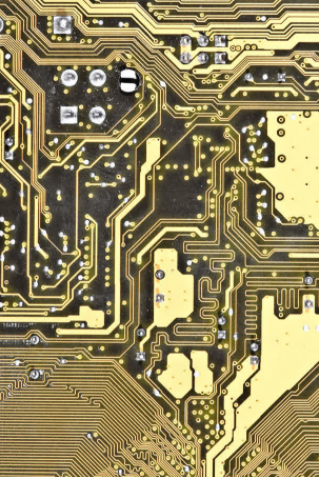In this next era of 5G, the demand for antenna PCBs is increasing. Now, providing suitable and accurate solutions is one of the biggest challenges. PCB antenna. If we want to control the equipment wirelessly, we must use a PCB antenna. If you watch old TVs from the 80s and 90s, you will know that the angles of the large meandering antennas must be kept different in order to clearly see the images of the different channels. The antenna is mainly a metal structure that can send or receive electromagnetic waves. It has various shapes and sizes from the smallest to the largest, and space agencies usually use it to process a variety of equipment and information between space and the earth. If you are interested in wireless communication and like to use it, then you will come across antenna PCB layout and assembly. There are many reasons why we need or use antennas, and there are different types of antennas. We use them as needed:
Wire antenna
Short dipole antenna
Dipole antenna
Loop antenna
Monopole antenna
Periodic logarithmic antenna
Bow tie antenna
Log periodic antenna
Periodic log dipole matrix
Aperture antenna

Slot antenna
Horn antenna
Microstrip antenna
Rectangular microstrip patch antenna
Quarter wave patch antenna
Reflective antenna
Planar reflector antenna
Corner reflector antenna
Parabolic reflector antenna
Traveling wave antenna
Long wire antenna
Yagi antenna
Spiral antenna
Helical antenna
Antenna array
Binary array antenna
Linear array antenna
Phased array antenna
Wire antenna:
It is one of the most widely used antennas we have seen. From vehicles to large ships and buildings, you can see the use of wired antennas. It has different shapes and sizes, such as wires, loops and spirals, and is one of the easiest antennas to use.
Dipole antenna:
It consists of two conductors on the same axis, and the length of the cable must be smaller than the wavelength.
Short dipole antenna:
It is one of the simplest antennas on the market. We call it "short" because it uses short wavelengths. It is an open circuit antenna. The wavelength at which the frequency works must be greater than the length of the cable.
Monopole antenna:
This is a special case of dipole antennas. It has only one pole, so it is called a dipole antenna.
Loop antenna:
The loop antenna is basically composed of a single-wire loop or a multi-turn multi-wire. The amount of radiation generated by the loop antenna is almost equal to.
Aperture antenna:
This type of antenna basically consists of a dipole or loop antenna.
Slot antenna:
This antenna has one or more slots. This type of antenna is mainly used for microwave frequencies.
Horn antenna:
The horn antenna is one of the most popular antennas. Because of its many advantages, it is widely used. It affects the transition between the propagation of waves in free space and the transmission line.
Therefore, now we have a basic understanding of antennas, but now we will discuss some parameters that define or determine antenna characteristics.
We will discuss many parameters. what:
Radiation intensity
Radiation pattern
Efficiency and power gain
input resistance
bandwidth
Effective opening
Antenna polarization
Radiation pattern
The radiation from the antenna cannot be the same and the same in all directions. It must be largest in one particular direction and smallest in other directions. When the antenna's radiation pattern is only a function of direction, it is called a radiation pattern. Wire antenna
Radiation intensity:
If you want to calculate the radiation intensity of an antenna, you must calculate the antenna's power per unit solid angle. The unit of radiation intensity, expressed in watts/degree (degrees/second).
Directivity and gain:
If we think of an antenna with the same amount of radiation in all directions, we call it an isotropic antenna. Although this is a hypothetical condition, we will actually use it just to find directionality and gain. The power density of an isotropic antenna is the same at all points. Then, the average power of the antenna is a function of the radiated power Pavg = Prad /4πr2W / m2
Now, of course you can see the ratio of the power density to the average power obtained here. On the other hand, directivity can be defined as the radiation concentration in the direction of maximum radiation.
Radiation efficiency and power gain: Radiation efficiency can be expressed as the ratio of radiation power to input power. ηr = Prad /
The pin power gain can be expressed as the ratio of the power radiated in one direction to the total power.
input resistance:
Input impedance is an important parameter of antenna radiation. If the input impedance of the antenna does not match the input transmission line, the performance of the antenna will be reduced due to the reflected power.
Effective length:
The effective length is the length of an imaginary linear antenna with a uniformly distributed current.
Bandwidth:
The frequency range that keeps the characteristics of the antenna at a specified value is called bandwidth.
Effective opening hours:
The ability of an antenna to obtain energy from electromagnetic waves is called the effective aperture.
Antenna polarization:
It refers to the physical direction of electromagnetic wave radiation in the guiding direction.
Therefore, it is obvious how the characteristics of an antenna affect the performance of the entire system. Now, we will discuss the antenna PCB circuit board and its working principle, how to design the antenna PCB and so on.